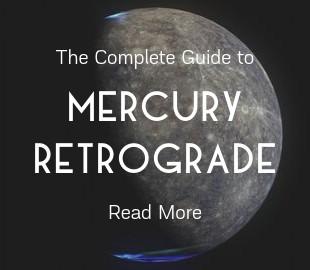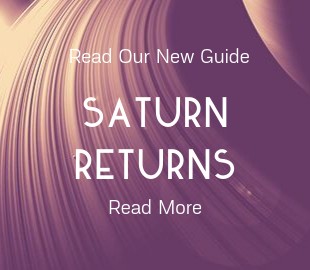Astrology Aspects
Connection between celestial bodies
In this section, we talk about Astrology Aspects.
Astrological Aspects are a key part of understanding a complete birth chart.
Aspects tell us about the relationship of the zodiac signs and planets at your time of birth.
These aspects help understand inner peace and harmony within soomeones natal chart.
Let’s take a look at Aspects.
What Are Astrology Aspects?
Astrology Aspects Explained
Astrology Aspects are the connection(s) or relationship(s) between two or more planetary aspects or celestial bodies when looking at someone’s birth chart using angles and degrees of the zodiac 360 degree circle.
For an example, let’s take a look at Brad Pitt’s birth chart again.
See all of those blue and red lines in the middle?
They are Aspects. Lines connecting the planet
Aspects Explained
An aspect is defined by the angular distance between the two planets on a 360° ecliptical chart.
The nature of the aspect depends on the number of degrees separating the two planets.
The astrological aspects are generally in the central circle of a natal chart. The different aspect lines between the symbols are distinguished by using different colours.
For example; Squares and oppositions (red) or trines and sextiles (blue)
These connections always alter the interpretation of the planets and signs involved.
When planets are in aspect to each other, their interpretations must be blended according to the nature of the aspect.
Aspects in Astrology are incredibly crucial in interpreting any chart.
Aspects indicate how the various planetary and sign energies play out.
They show many things including where there will be struggles or ease within a birth chart.
Without acknowledging the aspects in a chart, the reading is incomplete and ultimately incorrect.
Keep this in mind when you begin to read the interpretations of your planets in the signs of your chart – the aspects tell more of the story.
Astrological Orbs and Aspects
The angles between planets never always match the exact standard definition of aspects.
The degree of separation between exactness of the aspect angle is referred to as “orb” in astrology.
If the orb is tight (an almost exact aspect, within 0-10° of being the exact angle), the aspect is more powerful. Each aspect is allowed a different orb though opinions vary on what these are.
Example:
Mars in Taurus at 12° would be trine Saturn in Virgo at 12°.
This would be an exact trine.
There is a 0° difference between this aspect.
In natal birth charts, accepted orb variations vary depending on the aspect.
- Between 0 and 10 degrees for oppositions and conjunctions,
- 7 to 9 degrees for trines and squares,
- 4 to 6 degrees for sextiles.
Orbs for other angles include 2 degrees for quincunxes, around 1 degree for semi-sextiles and semi-squares, and often 0.5 to 1 degree for quintiles and their family (semi-quintiles and bi-quintiles). More about them later.
Example: Mars in Taurus at 12° would still be trine Saturn at 19° in Virgo because trines allow up to 9 degrees for the influence to still be be applicable.
The influence would not be as strong as an exact trine, but it would be more influential than Saturn at 25° in Virgo.
Much smaller orbs angles self-dramatisation in forecasting and synastry.
A sign can still be aspected even if it is not an exact angle. For example, this trine aspect of 10° would still be an aspect if it was anywhere in the shaded area, for example at 17°. This is because anywhere in this area is still within ORB proximity to have the same affect.
What Are The Aspects in Astrology?
There are many aspects of astrology, but some have greater significance and value than others. Because each of the signs is 30° of the ecliptical chart, the principle aspects normally are normally divisible by 30.
The aspects can fall into multiple categories, but they are as follows:
1 Major Aspects
These aspects refer to the following:
- Conjunction (0°)
- Sextile (60°)
- Exact square (90°)
- Trine (120°)
- Opposition (180°)
2Minor Aspects
These aspects refer to the following:
- Semi-Sextile (30 degrees)
- Quincunx or Inconjunct (150 degrees)
The first 2 of the minor aspects have a heavier weight than the other minor aspects because they are divisible by 30 degrees (like the major aspects) thus having an impact on the elements involved in the chart.
The rest of the minor aspects are as follows (and are often not used):
- Quintile (72 degrees)
- Biquintile (144 degrees)
- Septile (144 degrees)
- Semi-Square (45 degrees)
- Sesquisquare (135 degrees)
- Novile (40 degrees)
3Hard Aspects: Challenging & Dynamic
Hard Aspects relate to the Square (90°), Opposition (180°), Quincunx (150°) and some of the Conjunctions (0°) and Semi-sextiles (30°), depending on the planets and the harmony of planets/signs involved.
4Easy Aspects: Harmonious & Flowing
Easy Aspects refer to the Trine (120°), Sextile (60°), and some of the Conjunctions (0°) and Semi-sextiles (30°), depending on the planets and the harmony of planets/signs involved.
Astrology aspects symbols
When reading about the relationship with between aspects, sometimes the relationship will be written
Just like each of the zodiac signs has a symbol and each of the planets, so does each of the aspects.
The list of symbols is as follows:
Conjunction
Sextile
Square
Trine
Opposition
Semi-sextile
Semi-square
Quincunx
Septile
Novile
Quintile
Biquintile
Astrology Aspects List
Complete Aspects List
Below is a deeper description of each of the aspects.
Major Aspects
Major Aspects List
Conjunction ( ) 0°
A conjunction is when two planets form an angle of approximately 0 degrees of each other.
An orb of up to 10° difference is usually considered conjunction.
The conjunction will have a muted impact when the conjunct planets are in different signs/element.
This aspect is regarded as the most dominant aspect, intensifying the effects of the involved planets and becomes a significant point in the chart.
It marks a strongly focused potential for expression along with a tendency for direct action and self-dramatisation. The two planets in conjunction are blended, fused, intensified and interpreted as a blended combination in which the planets work together.
Any conjunction in an individual chart should be regarded as significant since it indicates an intense merging and interaction of two life energies. The most powerful of all conjunctions are those involving one of the “personal planets” (Sun and Moon, Mercury, Venus, and Mars) or the angle of the Ascendant (Rising Sign).
Such conjunctions always characterise particularly strong modes of energy flow and personal expression (by planet and sign) and dominant emphases in the person’s life (by the house).
The keynote of the conjunction is action and self-projection.
Sextile ( ) 60°
Sextiles form when two planets are positioned 60 degrees apart.
An orb of up to 4° difference is considered to be a sextile.
The sextile has been traditionally said to be similar in influence to the trine aspect, but of less significance. It indicates ease of communication between the two elements involved, with compatibility and harmony between them, but only provides opportunity. It requires effort to gain its benefits.
It represents a natural flow of opportunities or ideas that, if acted upon, will help realise the individual’s goals.
It can also indicate talents.
This is a harmonious aspect in which the energies of the planets involved collaborate well and work comfortably together.
Square ( ) 90°
Square angles form when two planets are 90 degrees apart.
An orb of up to 7° difference is considered to be a square.
It is an aspect of tension, with the planets are in constant conflict.
Planets in square aspect are at cross-purposes with each other, and the native strongly feel their struggle and internal conflict. To overcome these angular relationships them, he must continuously fight against the difficulties set by their energies.
The aspect endows with strength and the ability to overcome a great many hurdles in life, provided that the person has much courage and tenacity.
Squares prevent people from keeping still and prompt them to move continuously ahead, create, and evolve, since immobility is hard to bear when such constant tensions crop up.
This aspect implies restrictions and challenges. It is a dynamic aspect since the challenges pressure you to work on the issues represented by the planets involved. They are in conflict that leads to irritation; though patient hard work can result in success through an integration of the two principles.
Traditionally, this is a negative, inharmonious aspect.
The planets and houses involved are areas in the individual’s life where adjustments and tremendous effort must be expended to realise the gains.
Trine ( ) 120°
A trine angle forms when two planets are 120 degrees apart.
An orb of 8° difference is considered to be a Trine.
It is considered the most fortunate of aspects.
It represents smooth flowing energy between the planets involved, bringing luck, opportunities, and innate creative talents. However, too much of a good thing can be bad – the natural energy brought on by the trine is often taken for granted, and the talents and gifts of the planets get left unexpressed.
More often than not, the trine aspect tends to manifest the most pleasant potential of the planets involved.
Planets in a trine aspect support each other and create a feeling of well-being and easiness since they are in harmony with each other. It is an aspect of good luck and psychological comfort.
It is possible to have 3 connected trines connecting together forming a chart shape known as a grand trine.
Opposition ( ) 180°
An opposition aspect forms when two planets are 180 degrees apart.
An orb of 10° difference is considered to be an opposition.
The opposition (180°) is the circle divided by two with a complete division.
This aspect indicates a fundamental polarity or duality; a situation in which one must cooperate with others or break with them.
It creates tension leading to frustration though objectivity may result in a delicate balancing of opposites.
Resolving the tension is helped by compromising between the two energies.
Otherwise, they bounce back and forth, competing for centre stage in your life.
Compromise is by accepting that the two are parts of a whole.
In general, this is considered an inharmonious aspect.
It is possible to have 2 opposite connecting together forming a chart shape known as a grand cross.
Minor Aspects List
Semi-sextile ( ) 30°
This aspect forms when to planets are 30 degrees apart (1/12 of the 360° ecliptic).
An orb of 1 to 2 degrees difference is allowed.
It’s the most often used minor aspects. Probably because it is easy to identify in a chart. It indicates a constant interaction between the planets involved.
The energetic of a semi-sextile is one of building and potentiating each other slowly. It’s similar to a sextile in that it offers a quality of opportunity with an effort to benefit from.
It CAN is often interpreted as some type of potential, according to the planets’ nature, signs, and houses; but a potential that is difficult to realise due to the signs’ incongruent natures.
Novile ( ) 40°
This aspect forms when two planets are 40 degrees apart.
It indicates an energy of perfection and/or idealisation.
Noviles always describe an initiation. In natal charts, they describe initiations to be undertaken this lifetime. The level of intensity with this aspect depends on the planets and signs involved.
For example, a person has Pluto novile Moon, the level of emotional intensity would be very high.
If novile aspects are connected together in novile patterns, it suggests that this lifetime is part of a series of initiations between the planets that have been successful to some degree.
Septile ( ) 51.5°
This aspect forms when two planets are 51.5 degrees apart.
If a septile aspect is formed in the natal chart, it often indicates that a measure of wisdom already attained by the individual.
It is a somewhat mystical aspect that indicates a hidden flow of energy between the planets involved.
There is often an energetic or spiritual sensitivity or an awareness of finer, subtle and hidden levels of our reality involving the planets in septile aspect.
Semi-square ( ) 45°
This aspect forms when two planets are 45 degrees apart.
The semi-square is considered an important yet hard minor aspect.
It indicates a challenging or stimulating energy, like a square but less intense and more internal.
Its thought to cause internal friction in the native’s life and thus prompts some action to reduce that friction.
The semi-square is like a warning. The semi-square in the birth chart is evidence that the person with this aspect has begun to congest on those awarenesses of spiritual principle represented by the planets concerned.
The semi-square is evidence of gathering tension. It serves as a lesson to master the semi-square as it it will have a knock-on effect on your chart in other areas.
Quintile ( ) 72°
This aspect forms when two planets are 72 degrees apart.
Quintiles describe the creative/destructive processes in human life.
People with even one quintile series aspect or carrying quintile degrees have these qualities strongly marked in their nature.
The creative/desctructive qualities are often interconnected.
It indicates a powerful creative flow of energy between the planets involved. It’s often an opportunity for something expressive or performative.
Biquintile ( ) 144°
This aspect forms when two planets are 144 degrees apart.
Biquintiles can describe some form of clairaudience or clairvoyance.
This would be even stronger if the aspects is involved with the Vertex axis.
Quincunx / Inconjunct ( ) 150°
This aspect forms when two planets are 150 degrees apart.
This aspect does not offer equal divisions of the circle, unlike other aspects. Its effect of a quincunx is most apparent when there is a triangulating aspect of a 3rd planet in any major aspect to the 2 planets, which are quincunx.
To interpret the quincunx, you need to study the houses, planets and signs involved. The effect will affect different areas of life being brought together that are not usually in communication.
Keywords for the quincunx are mystery, creativity, unpredictability, resourcefulness and humour.
The quincunx aspect always shows when there are changes in life. The signs and houses involved describe the area(s) of change. Typical of the quincunx aspect, these changes require you to be flexible and ‘on your toes’ with how you deal with things.






